Windows File Backup - 4 Efficient Ways for You to Protect Data
Backing up your Windows files regularly can save you from a daunting experience if your hard drive happens to fail or get damaged. Also, it is extremely simple and easy to backup your files.
To avoid future regret, keep reading to learn how to back up your files.
Windows File Backup - Why It Is Necessary?
Restoring data after permanent loss is a painstaking task, and even then, it is not guaranteed you can restore all your files and folders.
If your hard disk crashes or gets damaged, you will have to shell out thousands of dollars to restore your files and folders. All of this could be avoided if you always backed up your computer.
In the age of digitalization, where everything is stored on a computer it can be a daunting experience to lose your files and also recover them.
Today, we are going to let you know how to backup your Windows files. Keep reading.
What Are the Types of File Backup?
There are three types of file backups: incremental backups, differential backups, and full backups.
Full backup:
In a full backup, you backup all of your data, and this is the backup method that takes the longest to complete. However, it's also the easiest to recover from.
Incremental backup:
As the name suggests, incremental backup is nothing but backing up your data from the previous time that it has been created or changed.
That is, let's suppose you made a backup of your computer two months ago. If you chose to create another backup today, the computer would take snapshots of all the new information since the last backup and create a backup of the changes made in the past 2 months.
But a full backup will be performed when setting up the incremental backup as it is necessary.
Differential backup:
The differential backup is very similar to the incremental backup, but with a minor difference.
In incremental backup, all the changes that have been made since the previous backup get backed up. In differential backup, while everything is similar, it backs up everything since the last full backup.
In simple words, the differential backup backups the changes made between one full backup and another full backup, while the incremental backup backups changes that have taken place since the previous backup.
Types of Backup: Full vs. Incremental vs. Differential Explained
In this article, you will get an idea of 3 types of backup; full, incremental, and differential. Before choosing any type, you should know which one is suitable for you.
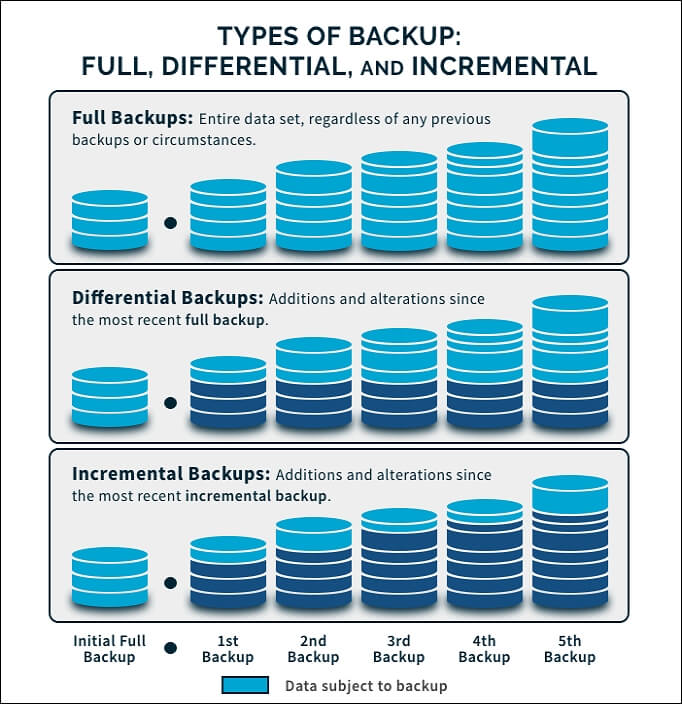
How to Create a Windows File Backup?
No matter if you are still on Windows 7/8/10/11, today you are going to find out how to backup your Windows files the right way.
1. Windows File Backup - File History
File history is a feature that is available from Windows 8 onwards. This feature helps to automatically backup specific file folders to a backup device.
And when needed, with the File History feature, you can restore an earlier version of the file in case it is lost, corrupted, or becomes useless.
Setting up file history on Windows 10 is fairly simple compared to setting it up on Windows 11.
Here's how to enable file history on Windows 10:
Step 1. Connect a USB hard drive.
Step 2. Click on the "Start" button and search for "Settings".
Step 3. Select "Update & Security", and then select "Backup".

Step 4. Click on "Add a drive" under "Back up using File History" and select your external drive as a backup location to activate File History.
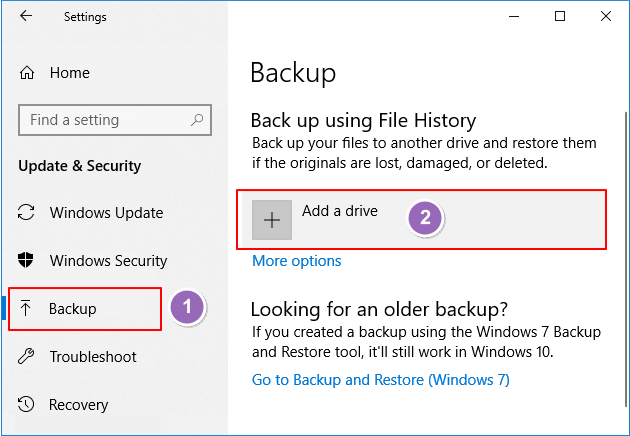
Step 5. Now, you activated File History, but there are a few steps before it starts to backup.
Step 6. Click on "More options".
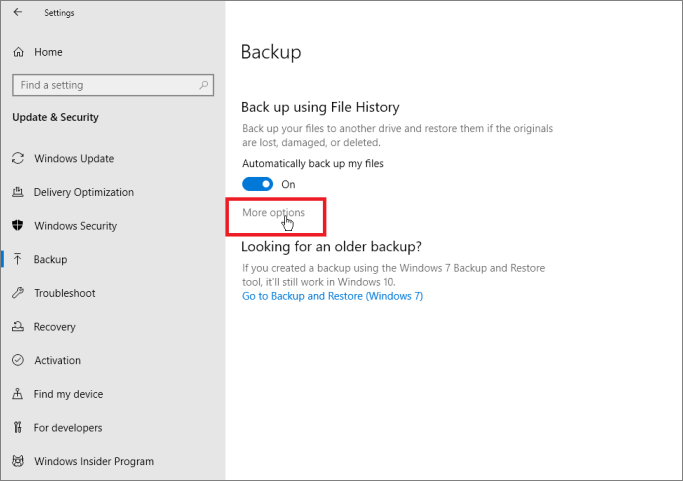
Step 7. Select "Back up my files" and select the frequency you want to back up your files.
Step 8. Now, select "Keep my backups" to confirm how long you want your backups to be stored on your external hard drive.
Follow the below steps to enable File History on Windows 11:
Step 1. Connect your external hard drive to your PC.
Step 2. Click on the "Search" button, and search for "File History".
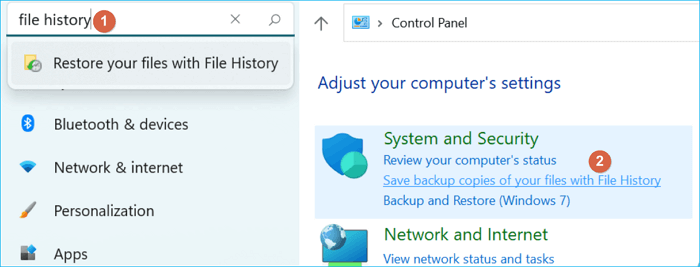
Step 3. Click to open the result, now you're in the File History window. Then click the "Turn on" button to activate File History.
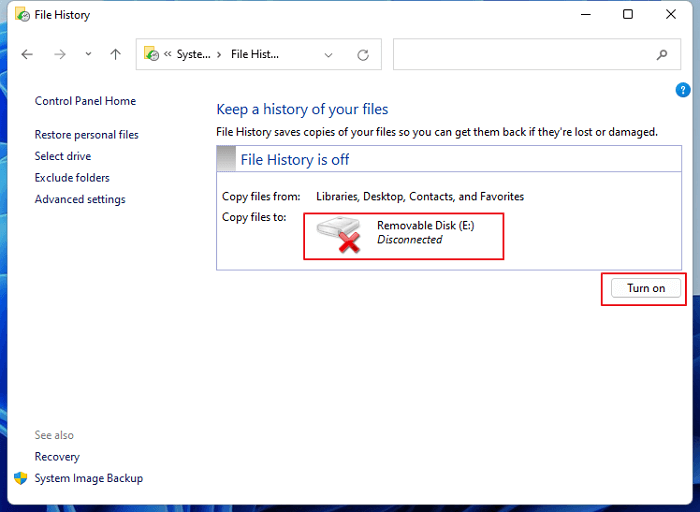
Step 4. Then choose where to save the backup files. In Windows 11, users do not have the option to customize the backup content. You can only copy files from Libraries, Desktop, Contacts, and Favorites.
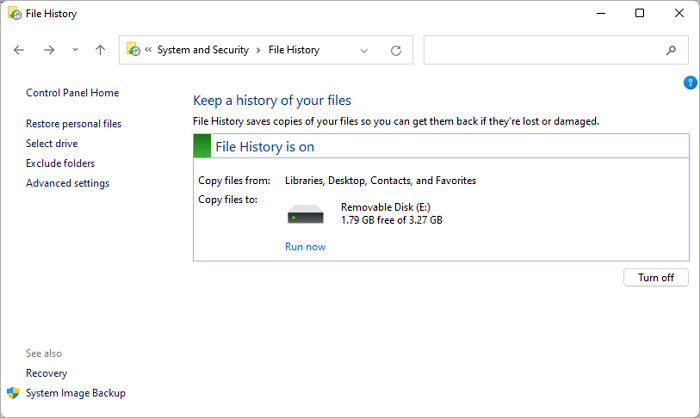
Step 5. However, Windows 11 keeps all the File History settings. You can click the Advanced settings to set up the backup frequency.
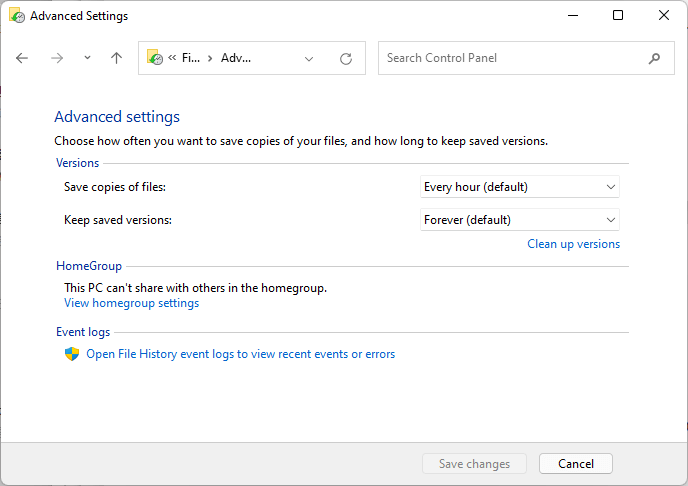
Step 6. Once changes have been made, click on "Save changes" to save the changes.
2. Windows File Backup - OneDrive
OneDrive is Microsoft's cloud storage platform where users can backup files and folders to the cloud to prevent accidentally deleting them or losing them. OneDrive is very simple to use, integrates seamlessly with Microsoft products, and so much more.
To turn on file backup to OneDrive, follow the below steps:
Step 1. Click on the cloud icon in the notification area.
Step 2. Click on the gear icon, and the select "Settings," followed by "Backup," and then select "Manage Backup".
Step 3. Select the files that you want to backup and then select "Start back up".
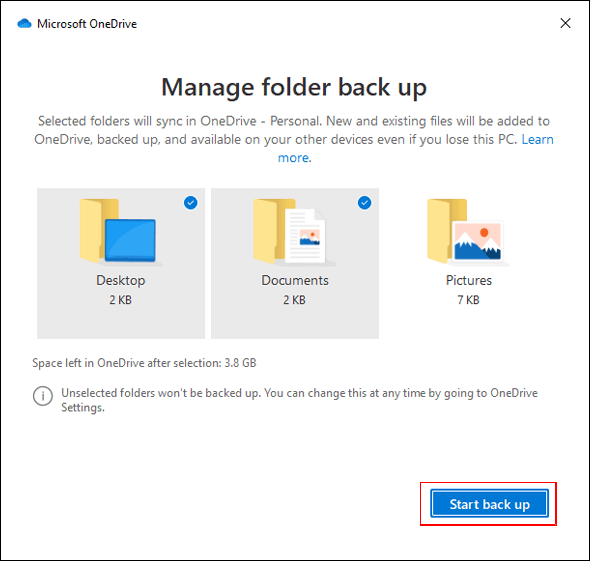
3. Windows File Backup - Windows 7 Solution
Since Windows 7 doesn't have a File History, here's how to backup your Windows 7 computer.
Step 1. Click on the "Start" button, and open the "Control Panel".
Step 2. Select "System and Security" and then choose "Backup and Restore".
Step 3. Click on "Set up backup".
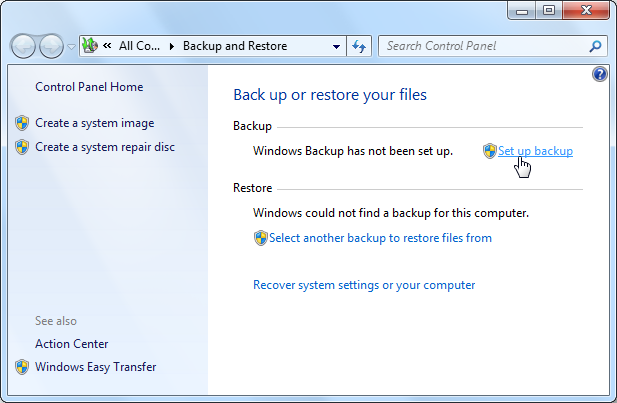
Step 4. Select where you want to save your backup, such as a USB flash drive, a CD/DVD, or on a network, and then click Next.
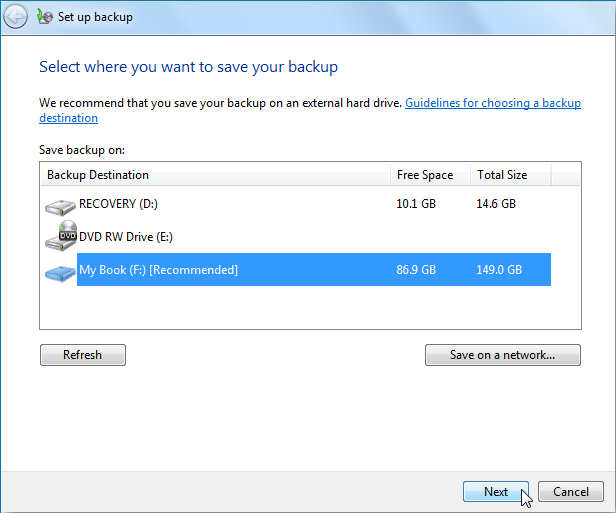
Step 5. Select "Let Windows choose (recommended)".
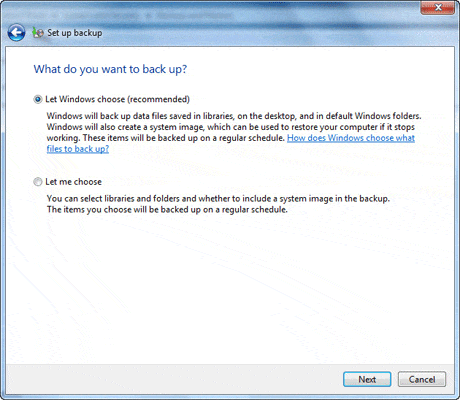
Step 6. Click on "Next" and then schedule backup timings, and click on "Save settings and run backup". The backup will start now.
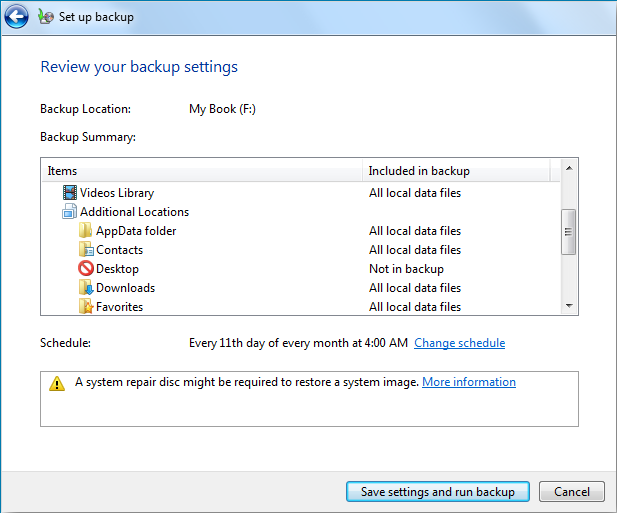
All-in-One Windows File Backup Creator - Qiling Backup
Qiling Backup is the solution to all your backup needs. No matter if you are on Windows 7 or Windows 11, Qiling Backup makes the backup process very simple and easy. You can backup your files with just a few clicks. Moreover, you can also password protect your backups and even create a system image with just a few clicks.
Rich backup options for users to create better backup plans
Clear and friendly user interface
Clone and upgrade HDD/SSD
If you want to simplify the backup process, the free version of Qiling Backup can help you backup your files. Download the software from the button below, and follow the guide to see how to back up files.
Step 1. To start backup, click the "File backup" button.

Step 2. On the top tree view, you'll see a list oflocal and network files. Selecting the files to be backed upby expanding the directory.
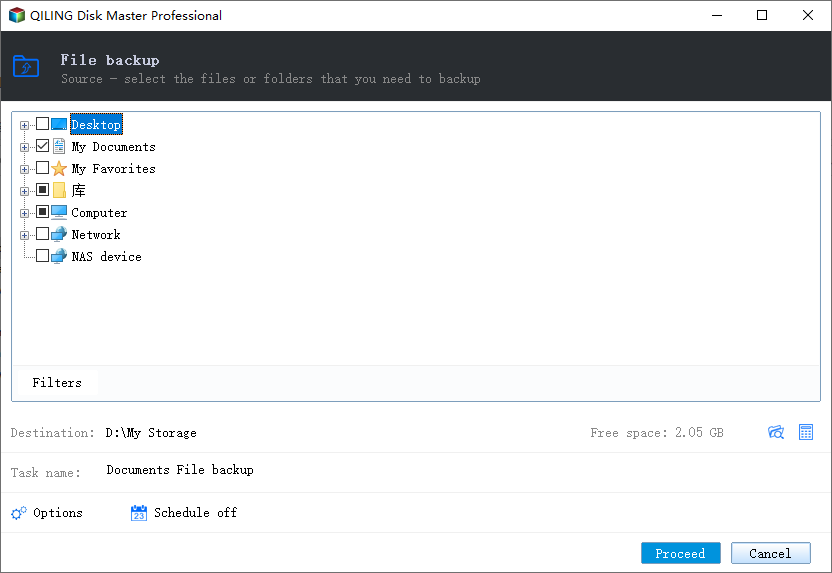
Step 3. Follow the instructions on the screen and pick the location where you wish to store the backup.
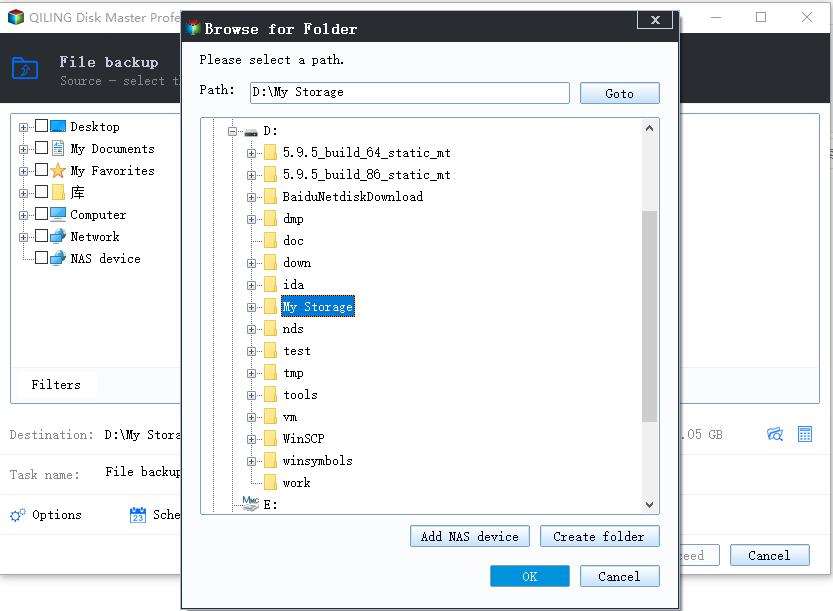
Step 4. In Backup Options, click Options to encrypt the backup with a password. There are a variety of customizable featuresavailable for you to explore, and you may tailor the backup operation to meet your specific requirements.
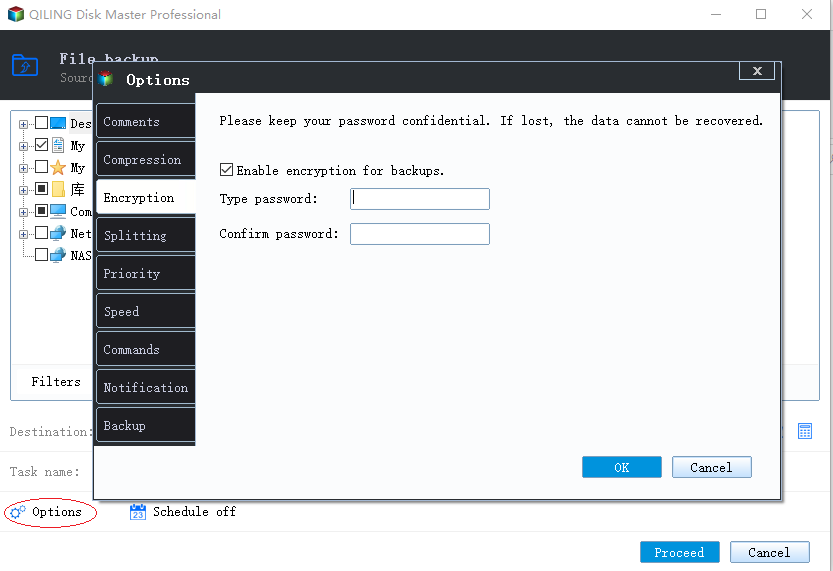
Specify the backup schedule, and choose whether or not to start the backup at a certain event in Backup Scheme
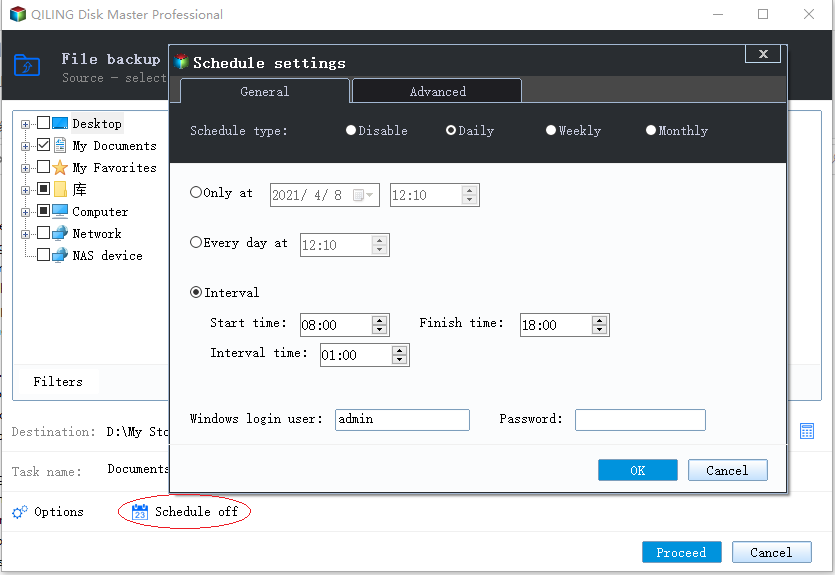
Step 5. Backups canbe stored on a local disk, in Qiling's cloud service, or on a network attached storage device (NAS).
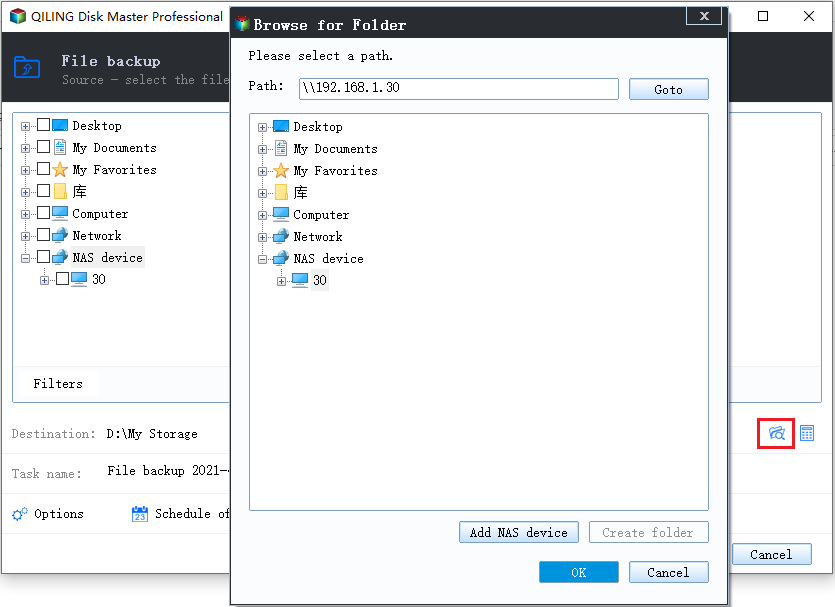
Step 6. Qiling Backup allows customers to back up data to a third-party cloud drive or the company's own cloud storage.
If you wish to back up your data to a third-party cloud drive, selectLocal Drive, scroll down to add Cloud Device andenter your account information.
Step 7. To begin a backup, choose Proceed. It will appear in the shape of a card on the left-hand panel when the backup process has been successfully finished. To handle the backup job in more detail, right-click on it.
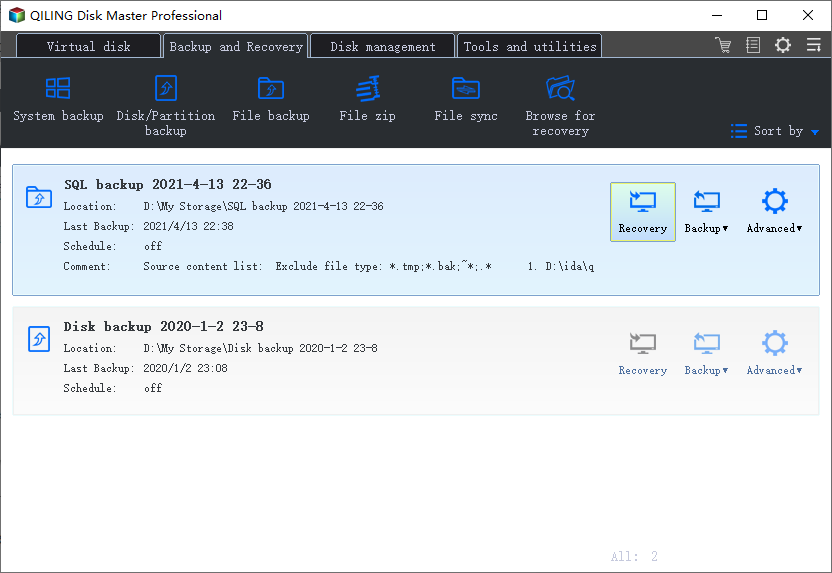
FAQs
1. Does Windows 10 have a file backup program?
Yes, Windows 10 has a file backup program.
2. How does Windows file backup work?
Setting up file backups on Windows is a little complicated and requires a little bit of time and patience.
3. Where does Windows 10 save backup files?
You can save the backup files on an external drive or in the cloud.
Related Articles
- [All-in-One] Create Windows 11 Backup to NAS (Network drive)
- How to Create Portable Windows 10 to USB Drive (Windows 11 Support)
- How to Automatically Backup Files to An External Hard Drive | 3 Ways
- How to Install Windows 10/8/7 on Multiple Computers at The Same Time | System Deployment Solution